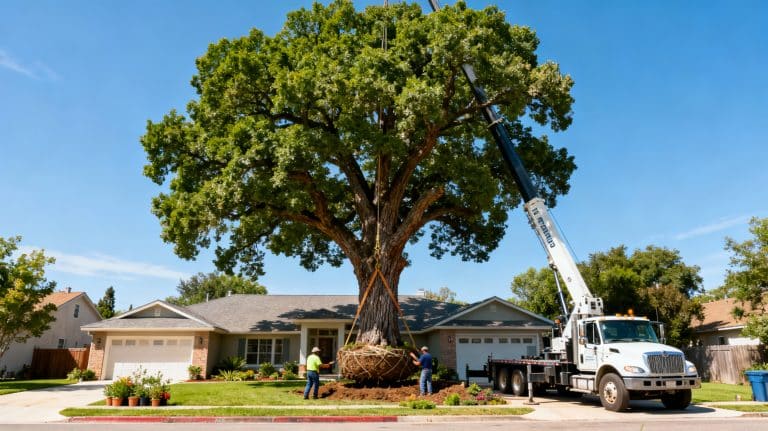Every gardener faces the same challenge. You plant something in April, and by June you’re standing in your garden wondering what variety of tomato you chose or which herb is oregano versus marjoram. This confusion costs time, affects plant care, and can throw off your entire growing strategy for the season.
Good organization changes everything. When you know exactly what’s growing where, you make better decisions about watering schedules, fertilizer applications, and harvest timing. The solution isn’t complicated. It starts with a simple labeling system that actually works through Houston’s intense summer heat and heavy rainfall.
Weather-resistant labels come in several formats, from metal tags to treated wooden stakes customized sticker sheets offer one flexible approach for gardeners who want to create their own designs while maintaining durability. The key is choosing materials that can handle Gulf Coast conditions without fading or peeling away.
The Real Benefits of Proper Garden Documentation
Accurate plant identification does more than prevent confusion. It helps you track which varieties perform best in your specific microclimate. When you document what you plant each season, you build a personal database of what thrives and what struggles in your particular soil and sun exposure.
Proper plant identification is essential for farmers and gardeners who need to control weeds effectively. Beyond pest management, labels help you maintain consistent care routines. Different tomato varieties need different pruning approaches. Herb varieties have varying water requirements. Without clear identification, you end up treating everything the same, which rarely produces optimal results.
Record keeping also protects your investment. If you spend money on specialized pepper varieties or heirloom seeds, you want to remember which ones justified the expense next season. Labels connected to a simple garden journal create a system where you can reference past performance and make smarter purchasing decisions going forward. This documentation becomes particularly valuable when relocating to a new property.
Just as hiring commercial movers ensures your business equipment arrives safely during an office transition, maintaining detailed garden records helps you successfully recreate winning plant combinations in a new space.
Creating Labels That Actually Last
The Gulf Coast climate destroys most labeling materials quickly. The sun bleaches plastic markers. Rain dissolves ink. Heat warps cheap tags until they become unreadable.
Professional-grade solutions exist, but they often cost more than most home gardeners want to spend. Metal tags work well for permanent plantings like fruit trees or perennial beds. For annual vegetables and herbs, several approaches offer different benefits. Treated wooden stakes provide a natural look and decent durability. Waterproof stickers applied to smooth surfaces like stones or coated wood can work when using materials designed for outdoor use rather than standard paper labels.
Building Your Labeling System
Start by deciding what information each label needs. At minimum, include the plant name and planting date. For vegetables, add the variety name since that affects everything from days to maturity to disease resistance.
Garden journaling experts at NC State Extension recommend maintaining detailed records of plants, weather events, and soil conditions to create a powerful resource for informed decision-making. Your labels serve as the physical markers that connect garden observations to written records.
Consider using a numbering system for larger gardens. Assign each bed a number, then reference those numbers in your journal. Color coding adds another organizational layer. Use different colored labels for plant families to make crop rotation planning easier the following season.
Practical Application for Different Garden Types
Container gardens need compact labels that don’t take up valuable pot space. Small tags that stick directly to containers work better than stakes that crowd plant roots. Position them where they’re visible but won’t interfere with watering or maintenance.
Raised beds benefit from labels placed at the end of each row. This keeps them visible without getting lost among foliage as plants mature. Stake-mounted labels work well because you can adjust their height as needed.
In-ground gardens present more challenges. Labels need to be tall enough to remain visible as plants grow but sturdy enough not to tip over. Combination systems using both in-ground markers and edge-mounted reference tags give you flexibility as the garden evolves.
Maintaining Your System Through the Season
Labels fail when gardeners don’t maintain them. Check tags monthly for fading, damage, or displacement. Replace worn labels before they become illegible. This ongoing maintenance takes minimal time but prevents the frustration of losing tracking information midseason.
Update your garden journal whenever you notice something significant. Which plants bolted early during hot spells? Which varieties showed exceptional disease resistance? These observations become invaluable for planning future gardens. Weather can relocate labels overnight. After storms or heavy winds, walk your garden and reposition any displaced tags.
The Long-Term Payoff
Organized gardens produce better results. When you know exactly what’s growing, you can optimize care for each plant’s specific needs. When you track performance over multiple seasons, you identify winning varieties worth growing repeatedly.
The time invested in creating and maintaining a labeling system pays dividends throughout the growing season and beyond. You’ll make faster decisions, waste less time trying to remember plant details, and develop expertise specific to your growing conditions. Start simple. Label what you plant this season with basic information. Good organization grows naturally when you build habits around documenting what matters most in your particular garden.













